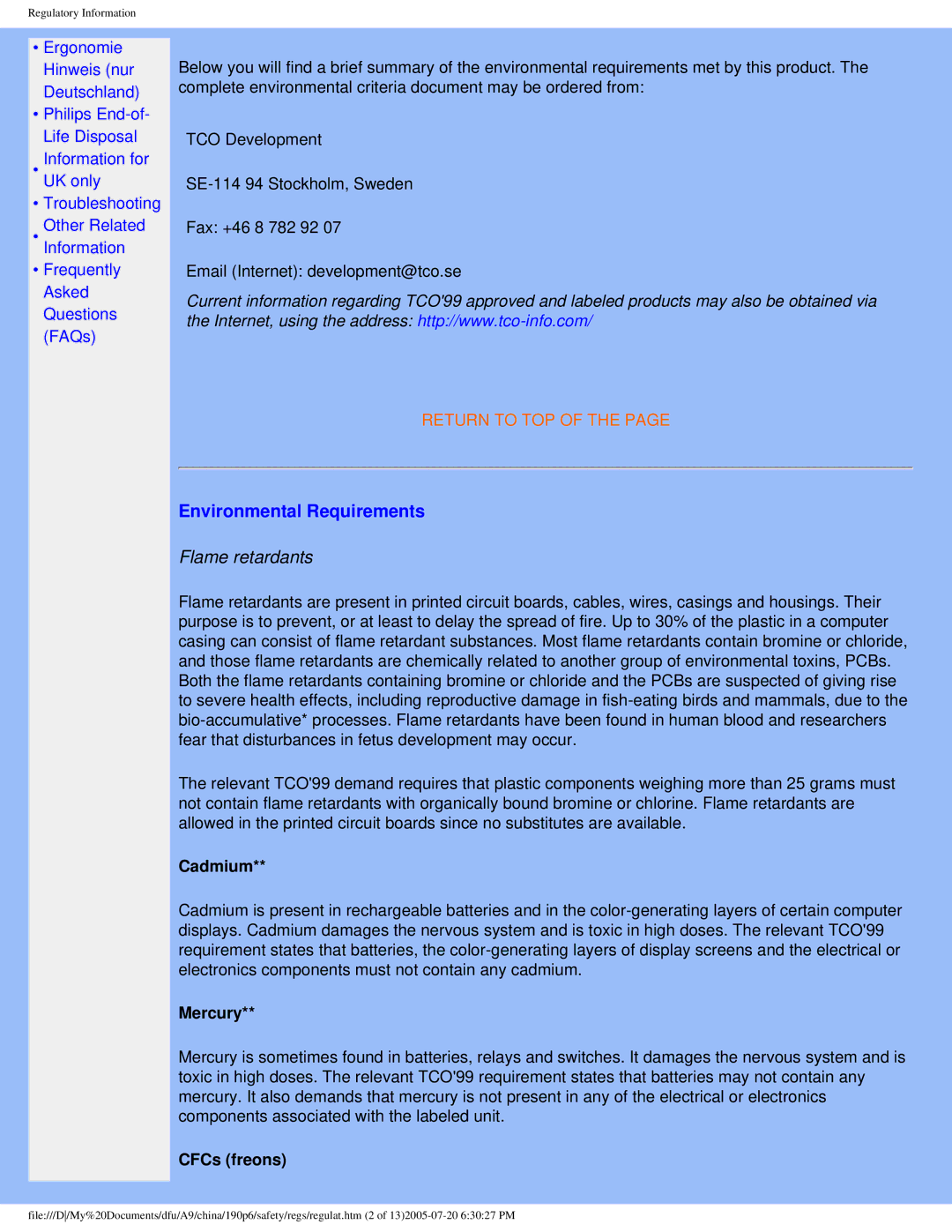190P6ES specifications
The Philips 190P6ES is a versatile 19-inch LCD monitor that combines performance, aesthetics, and eco-conscious technology, making it an exemplary choice for both professional and personal use. This model is particularly noted for its application in office environments, thanks to its wide array of features that enhance productivity and ease of use.One of the standout features of the Philips 190P6ES is its clear and vibrant display. With a native resolution of 1280 x 1024 pixels, it offers sharp text and detailed images, making it suitable for various tasks such as document editing, graphic design, and data analysis. The monitor employs an advanced TFT LCD panel that ensures consistent colors and wide viewing angles, allowing users to view content comfortably from different positions.
Additionally, the Philips 190P6ES is designed with ergonomic considerations in mind. It supports height adjustment, tilt, and swivel capabilities, enabling users to customize the monitor's position for optimal viewing comfort. This flexibility is essential for reducing eye strain and maintaining a healthy posture during extended work sessions.
Connectivity options are another strong point of the Philips 190P6ES. The monitor includes various input ports, including VGA and DVI-D connectors, allowing for easy connection to multiple devices. This versatility means users can switch between computers or laptops with minimal hassle, streamlining their workflow.
In terms of energy efficiency, the Philips 190P6ES is equipped with energy-saving technologies that comply with various green standards. The monitor features a low power consumption design, and its Auto Eco Mode adjusts the brightness based on the surrounding lighting, further contributing to energy conservation.
The monitor's design is sleek and modern, with a thin bezel that maximizes the screen real estate while giving it a contemporary look. Its minimalistic aesthetic makes it an attractive addition to any workspace, complementing today's minimalist design trends.
Finally, the Philips 190P6ES comes with various display settings and color calibration options, ensuring that users can customize their viewing experience according to their preferences. Whether for extensive gaming, professional graphics work, or everyday tasks, this monitor provides the performance and versatility that users demand. In summary, the Philips 190P6ES is an excellent display solution that harmonizes functionality, design, and energy efficiency, making it a worthwhile investment for any user looking for a reliable monitor.

